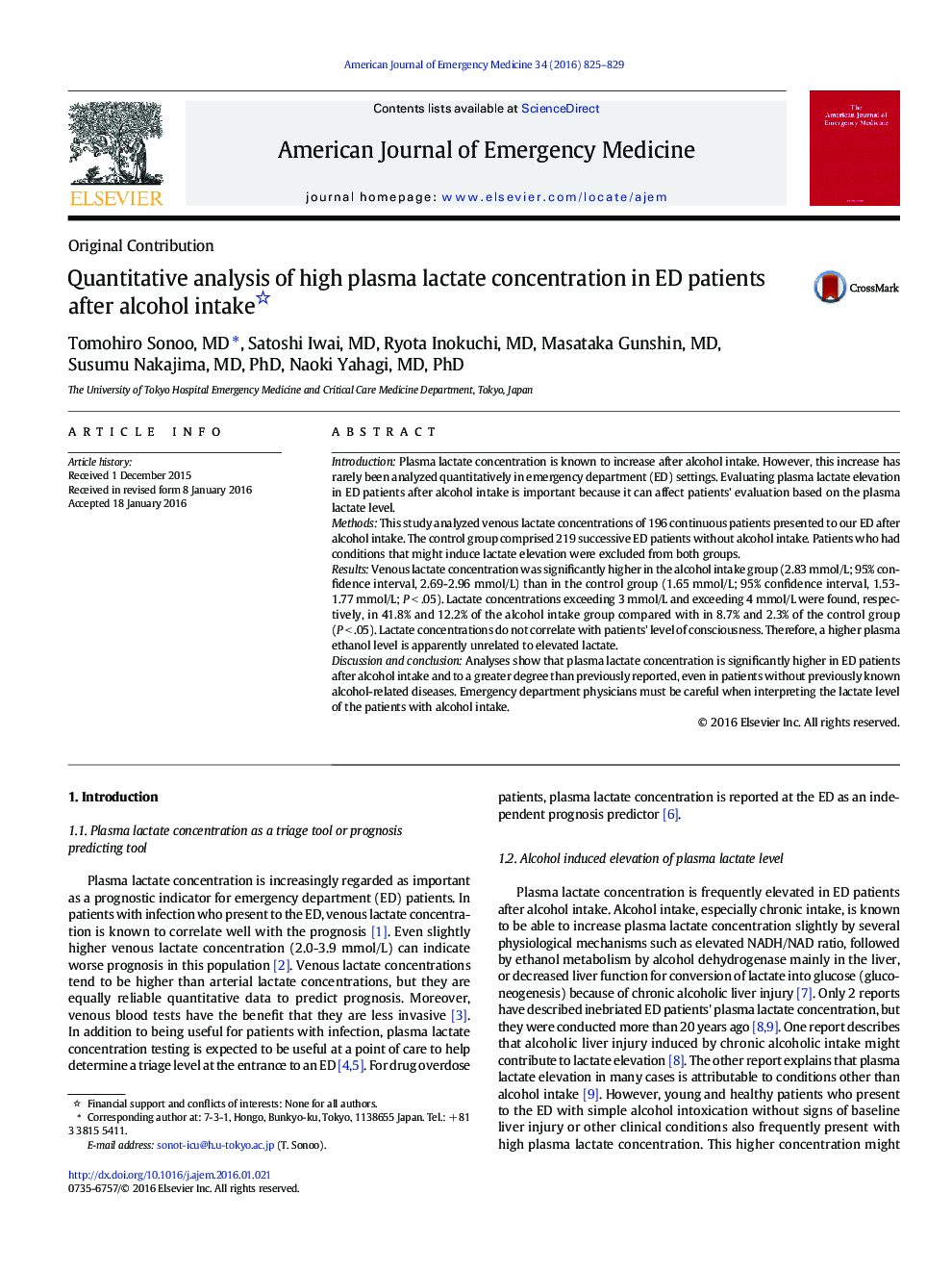| Article ID | Journal | Published Year | Pages | File Type |
|---|---|---|---|---|
| 3223295 | The American Journal of Emergency Medicine | 2016 | 5 Pages |
IntroductionPlasma lactate concentration is known to increase after alcohol intake. However, this increase has rarely been analyzed quantitatively in emergency department (ED) settings. Evaluating plasma lactate elevation in ED patients after alcohol intake is important because it can affect patients' evaluation based on the plasma lactate level.MethodsThis study analyzed venous lactate concentrations of 196 continuous patients presented to our ED after alcohol intake. The control group comprised 219 successive ED patients without alcohol intake. Patients who had conditions that might induce lactate elevation were excluded from both groups.ResultsVenous lactate concentration was significantly higher in the alcohol intake group (2.83 mmol/L; 95% confidence interval, 2.69-2.96 mmol/L) than in the control group (1.65 mmol/L; 95% confidence interval, 1.53-1.77 mmol/L; P < .05). Lactate concentrations exceeding 3 mmol/L and exceeding 4 mmol/L were found, respectively, in 41.8% and 12.2% of the alcohol intake group compared with in 8.7% and 2.3% of the control group (P < .05). Lactate concentrations do not correlate with patients' level of consciousness. Therefore, a higher plasma ethanol level is apparently unrelated to elevated lactate.Discussion and conclusionAnalyses show that plasma lactate concentration is significantly higher in ED patients after alcohol intake and to a greater degree than previously reported, even in patients without previously known alcohol-related diseases. Emergency department physicians must be careful when interpreting the lactate level of the patients with alcohol intake.
